I remember being over the moon when I got the first bag of clumping cat litter a decade ago. It made my life so much easier. I could easily scoop up the clumps, there was no odor, and I could go weeks before giving the sandbox a deep cleaning.
It made me wonder why this clay worked differently than the regular sand. What could it be made of?
After a bit of digging into the matter, I realized how important the ingredients in the cat litter are! Not just for the cat but also for cat owners and the environment. It also turns out that my favorite go-to clumping litter might not be the best for mother nature.
It is essential to make informed decisions while choosing your kitty litter. It is always wise to prefer sustainable products that do not impact your furry friend’s well-being.
In this article, you will find everything you need about what is cat litter made of. Cat litter is made of many constituents. Clay litters with additions of Bentonite are the most common. Other options are also available in the form of silica crystals and natural plant-based products such as wood, pine, and corn.
This information will also make it easier for you to decide what suits you and your cat the best!
Understanding Clay, Silica, and Biodegradable Cat Litter’s
Although clay cat litters remain widely popular, there are now various types of cat litter in the market to choose from. Silica-based cat litter and biodegradable cat litter made of paper, pine, sawdust, wheat, corn cobs, etc.
Clay Cat Litter
Cat litters made of clay are traditionally the oldest and most inexpensive cat litter. Initially, people used soil and sand in the cat litter box. It is still available to purchase. Clay naturally absorbs moisture, so it is a great choice as it can take in cat urine.
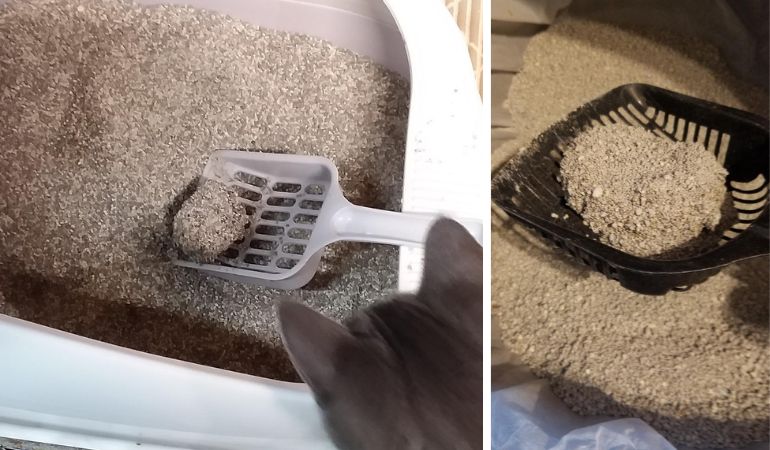
Traditional clay litter does not clump and has to be changed frequently as the odor can quickly become a problem. Adding baking soda to litter boxes is a good blend for odor control.
Clumping clay litter is made by adding bentonite clay to traditional clay litter. Generally, sodium bentonite or calcium bentonite is added to the clay. It produces free ions that attract fecal matter and cat urine. The clay can absorb liquid up to 15 times its dry weight.
So, the soiled litter forms clumps whenever your cat goes to business. These clumps are easily scoopable using a sifting litter scoop. It also masks odor pretty well. You can keep it close to your living room and won’t feel a thing unless the litter is old.
The clumping litter clay, however, is not environmentally friendly. It is harvested using surface mining methods that cause havoc for the ecosystem.
Mining bentonite requires the removal of the earth’s surface. The upper layers are entirely taken off, leaving a hole in the ground. It is filled with dust eventually and is dangerous for mother nature.
Another point of concern is that clumping and non-clumping cat litters may contain traces of silica dust. Silica, if inhaled or ingested in large quantities, can cause a risk of cancer. Silicosis happens when silica accumulates in a cat’s lungs. It causes shortness of breath and reduced lung capacity.
Silica Cat Litter
Silica litter is made of silica gel that you commonly see in your medicine boxes, bags, shoe boxes, etc. Silica is known to swell in the presence of moisture and is a good alternative to clay litter. The crystallized silica cat litters absorb cat waste and also works well for odor control.
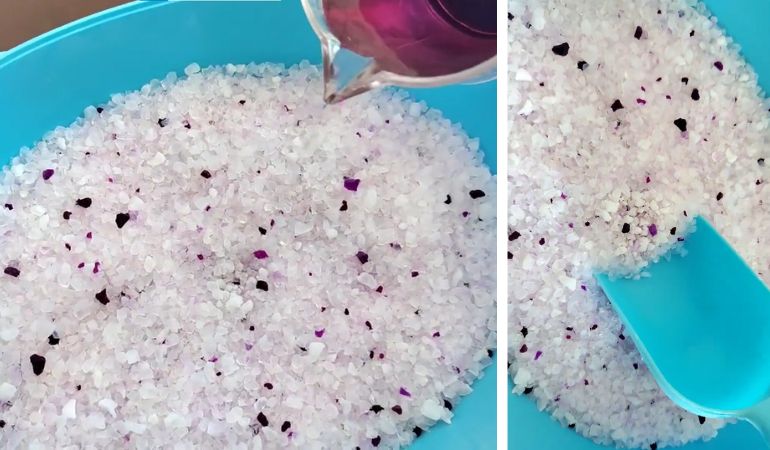
The crystals are a form of non-clumping cat litter that physically change color to yellow when used. Cat feces has to be scooped out. The litter box seems dry until the silica’s ability to absorb water finishes. It can then appear soggy, and the whole litter box needs to be refilled with fresh litter.
Silica does not stick to paws and does not leave trails until it is dry, as it has less dust and sometimes is dust free. Wet silica can stick to paws and is harmful if inhaled or ingested.
Biodegradable Cat Litter
Both types of cat litter mentioned above can cause problems for a cat’s health and nature. Natural cat litter alternatives are available that pose fewer risks and prevent the cluttering of landfills.
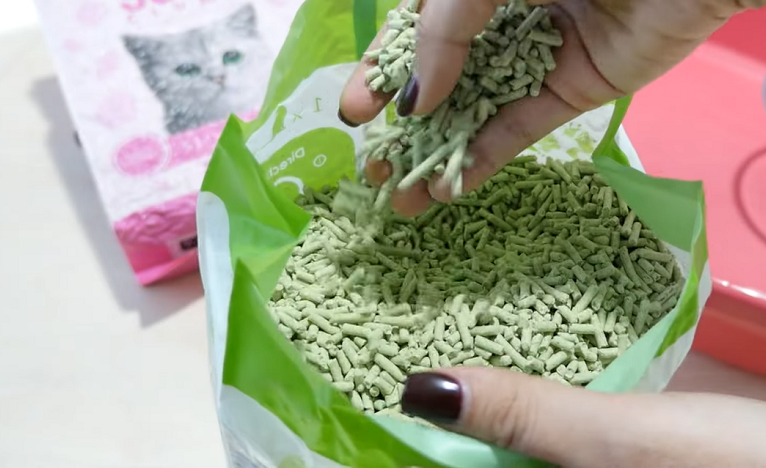
Biodegradable cat litter is made of renewable products such as rolled-up paper, peanut shells, pine chips, wood, wheat, sawdust, etc. To make biodegradable cat litter, raw materials are first ground, some kind of binding material is added for adhesiveness, and then they are formed into small pallets.
These pallets may or may not form clumps. The absorbency and odor control depends on individual components. One thing is sure; these products are a sustainable solution. They degrade well and are compostable as well.
Your furry friend might not like this type of litter. There is a possibility that the cat will completely reject the box. You may have to play around with options at first to decide which one suits your cat the best.
Different Kinds of Clay Cat Litter for Clumping and Non-Clumping
Although there are many options for clumping and non-clumping cat litters that are now available, the individual properties of all clay cat litters differ from one another. It all comes down to the formula used.
Companies tweak the ratios of several ingredients in the litter to improve the properties and performance of the product. These properties include absorbance, clumping capability, odor control, and adhesiveness.
The most common types of clays used to produce cat litters are sodium bentonite clay and calcium bentonite clay. They have great absorbance capability, usually 15 times their volume. They last a long time, so owners are usually happy with them.
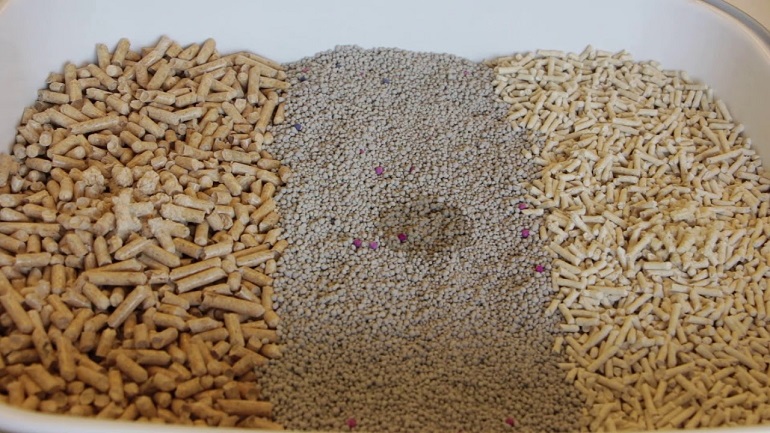
Baking soda or some fragrance is sometimes added to the formula. Both of these products remove odor. Minerals and mineral oils are added to help with soil particle binding so that the dust does not scatter as easily.
What are Sustainable Cat Litter Solutions?
Natural cat litter derived from plants is the most sustainable solution for kitty litter waste. Plant-based pallets crumble or dissolve when a cat pees on them. The enzymes present in litter provide natural odor control.
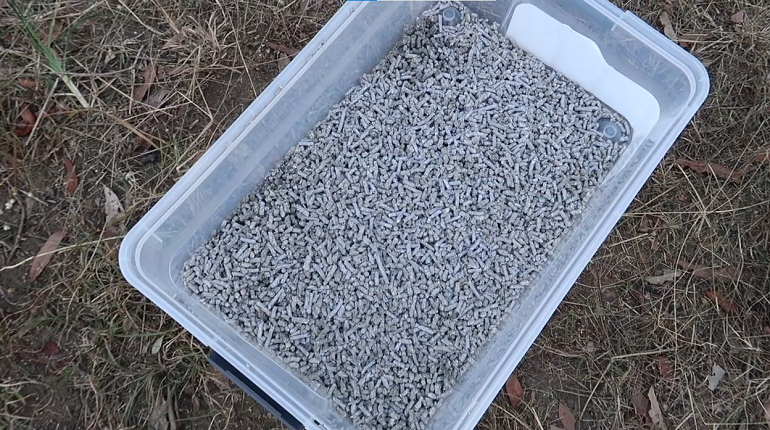
Cat poop must be scooped out frequently and disposed of in a plastic bag. Do not use any specialized plastic bags for disposal. The purpose is to reuse recycled bags. They prevent leakage.
Although natural litter may be flushed down the toilet. It is not recommended. It is better to throw it out with the trash. Cat poop should never be flushed in the toilet as it can cause bacterial contamination and may be very harmful to humans.
Cat Litter Options for Kittens and Cats with Health Issues
If your cat has a disease, you must go through with your vet to discuss the best cat litter options. Generally speaking, cats with respiratory illnesses need litter with low dust or no dust present. The options can range from clumping cat litters to non-clumping litters. Biodegradable pallets are also a good option.
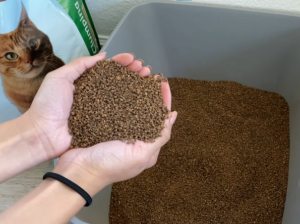
If your cat has renal problems such as kidney stones or bladder issues, you should go for a non-clumping litter. It will be easy for you to see if there is an issue or abnormality with the color of your cat’s urine. Some silica-based litters change color if there are disturbances in urine.
Cats with allergies may not respond well to fragrances added. Look for a formula that has no artificial smell or provides natural odor control. It is also recommended to choose a dust-free formula.
Conclusion
Most cat litter is made of bentonite clay and other minerals, natural ingredients like wheat, pine, paper, or synthetic silica crystals.
Your preference for the type of cat litter depends on your needs. You should ideally be looking for a litter that lasts long, controls odor well, and is safe for your pet. Clean the litter boxes daily and discard the waste product safely. Once the litter box is filled, clean the box thoroughly and refill it with fresh litter.
It is always good to be considerate of the environment. Choose a biodegradable litter made out of natural wooden products. They reduce the carbon paw-print and keep the earth a happy, healthy place for the kitties to come.


